Pointillism, the artistic movement against Impressionism
This art movement is based around a painting technique developed by French artists Seurat and Signac in which small, distinct points of unmixed color are applied in patterns to form an image.
Pointillism was a revolutionary new way of painting pioneered by Georges Seurat and Paul Signac in Paris in the mid-1880s.
It was a reaction against the prevailing movement, Impressionism, which was based on subjective responses of individual artists. Pointillism, by contrast, demanded a much more scientific approach. They are considered Post- Impressionists.
Along with Seurat and Signac, leading members of the group included Camile Pissarro, Edmond Cross, Henry Martin and Maximilien Luce.
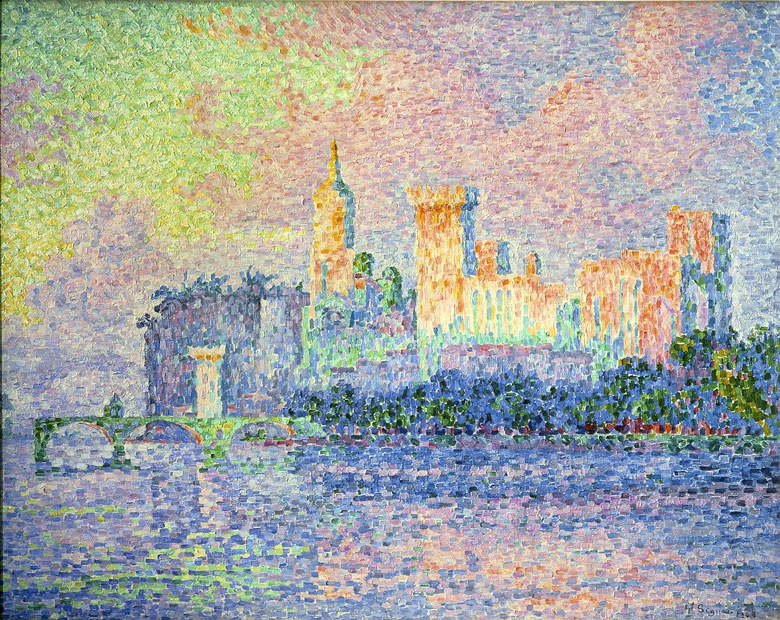
Points of pure colour
Pointillism involved the application of paint in carefully placed dots of pure, unmixed colour.
These would be blended by the viewer’s eye to create a more striking image than any made after mixing colours conventionally on a palette.
Georges Seurat is one of the icons of 19th-century art. He initially devised the painting technique known as Chromoluminarism and used conté crayon for drawings on paper.
In the mid-1880s, he developed a style of painting that came to be called Divisionism or Pointillism.
Rather than blending colours together on his palette, he dabbed tiny strokes or dots of pure paint onto the canvas. When he placed them side by side, they would appear to blend when viewed from the distance, producing luminous, shimmering chromatic effects through optical mixing.
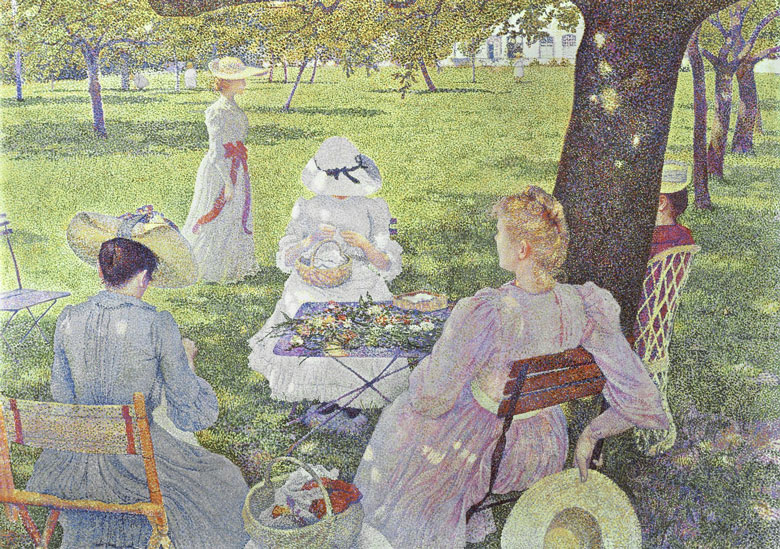
Art is harmony, the analogy of the contrary and similar elements: tone, colour and line. In tone, darker against darker. In colour, the complementary: red-green, orange-blue, yellow-violet.
He created two of the undoubted masterpieces of the movement: Sunday afternoon at La Grande Jatte, 1886 (Art Institute of Chicago) and Bacing at Asnières, 1884 (National Gallery in London).
Seurat‘s artistic personality combined qualities that are usually thought of as opposed: on one hand, his extreme and delicate sensibility. On the other, a passion for logical abstraction and a mathematical precision of mind.
His large-scale works altered the direction of modern art by initiating what is considered Neo–Impressionism.
After being rejected at the Paris Academy, he banded together with other artists to found the Salon des Indépendants, a more progressive series of exhibitions.
Seurat continued the work of the Impressionists, not only through his experiments with technique but through his interest in every day subject matter. He and his colleagues often took inspiration from the streets of the city, cabarets, nightclubs, parks and landscapes of Paris suburbs.
His life was cut short by diphtheria when he was only 31. After his death in 1891, Paul Signac took over as the movement’s de facto leader.
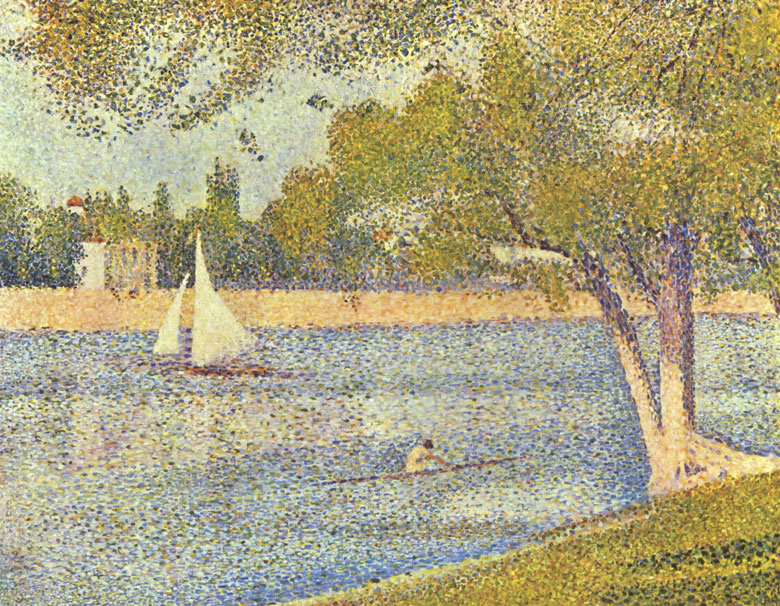
Science of the eye
A key figure for Pointillism was the French chemist, Michel Eugène Chevreul author of the book, Principles of Harmony and Contrast of Colours.
Employed by a Parisian tapestry factory, he wished to improve the strength of its colours and discovered that the issue wasn’t the dyes being used but the way different hues were being combined.
In short, the visual impact of a tapestry was actually a matter of optics, not chemistry. It depended on the juxtaposition of complementary colours (which enhanced each other’s intensity) such as blue and orange.
Seurat and the Pointillists drew heavily on his discoveries, applying to paints what the chemist had found in threads.
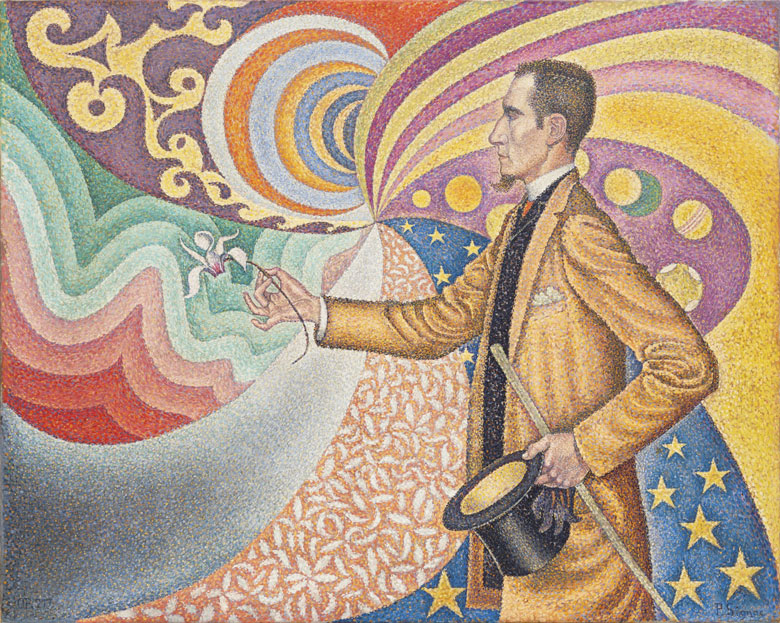
Painting by dots
The movement’s name derives from a review of Seurat‘s work by French art critic, Félix Fénéon, who used the expression “peinture au point” (painting by dots). Seurat actually preferred to call it Divisionism or Chromoluminarism but the term Pointillism remained with time.
One of the movement’s great champions, was immortalised in a celebrated canvas by Signac: Portrait of Félix Fénéon, 1890 (Museum of Modern Art, New York).
Paul Signac professed admiration for Naturalism, particularly in literature. He idolised Émile Zola and it is reflected in his art.
His emphasis on mechanics of optics and the study of colour theory situates him in a generation of artists who found paths for innovation by creating a kind of scientific approach to aesthetics.
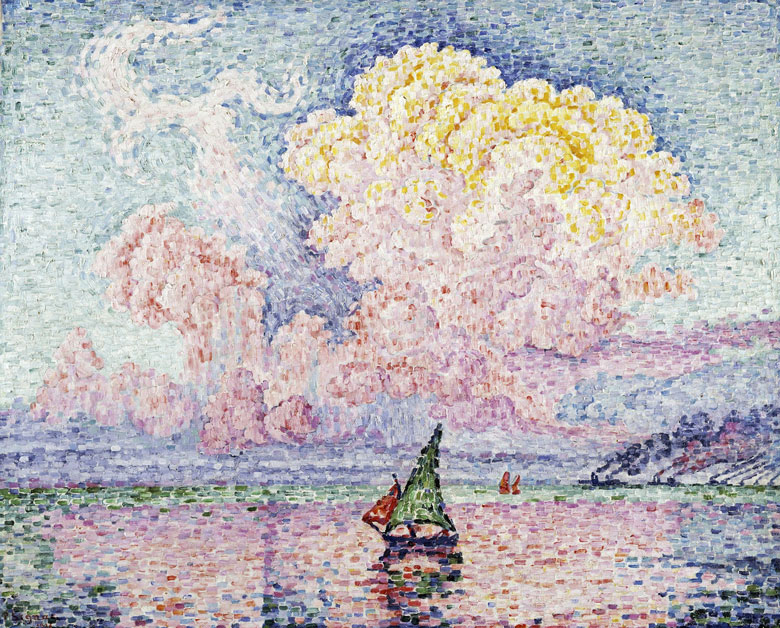
A meticulous technique
Pointillism is regarded as a Neo-Impressionist or Post–Impressionist movement.
Which is to say, it grew out of, and beyond, Impressionism. Works such as Seurat’s masterpiece “La Grande Jatte” were exhibited in last Paris Impressionist exhibition (1886).
Like members of that earlier movement, Pointillists wished to render optical phenomena. However, they renounced fluid, spontaneous brushstrokes in favour of a measured, meticulous technique.
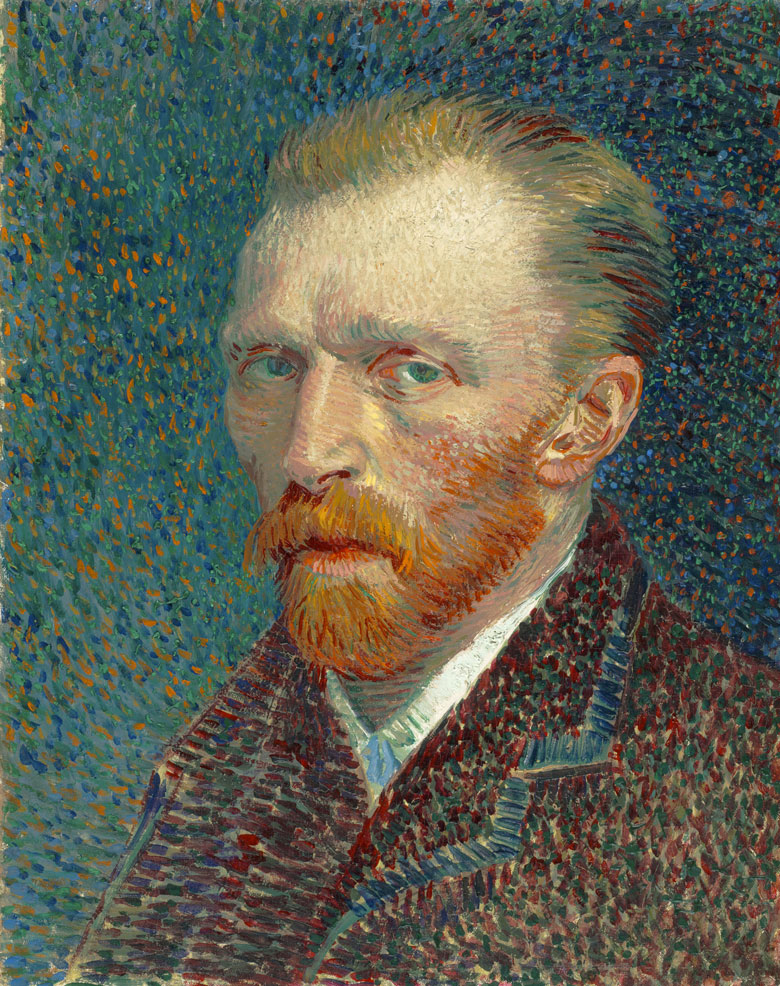
Van Gogh and Pointillism
Vincent van Gogh, who knew Seurat and Signac from his time living in Paris, had a brief association with their technique. Certainly some of his paintings from his Parisian period, show hints of its influence, such as his Self–Portrait, 1887.
After a visit to Seurat’s studio, Van Gogh claimed to have experienced a “revelation of colour”. It’s generally agreed that he was too restless a spirit for a style as technical as Pointillism.
Another famous artist who briefly embraced Pointillism was Camille Pissarro. Turning his back on the Impressionist, style with which he had made his name, he was hailed by one Parisian critic as “a master who continually and courageously adapts to new theories“.

The music of the dots
Musical metaphors were occasionally used to help describe Pointillism, most straightforwardly that of the coloured dots being in a kind of harmony.
Signac likened the process of choosing his colours to that of a composer considering each instrument while creating a symphony.
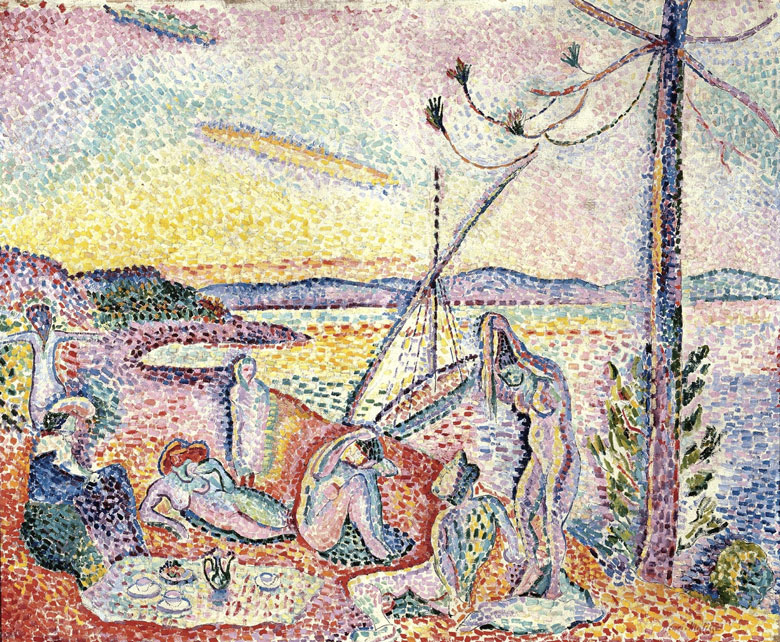
From Pointillism to Fauvism
With its strident colour combinations, Pointillism was a clear influence on Fauvism, among other movements.
Henri Matisse‘s “Luxe, Calme et Volupté”, 1904 (Musée d’Orsay) is an important work of transition between both art movements.
Later, other artists briefly made works in Pointillist style: Van Gogh, Robert Delaunay, Vuillard, Paul Klee, Kandinsky, Mondrian, Picasso…
Beyond the art world, Seurat’s painting “La Grande Jatte” inspired the hit Stephen Sondheim stage musical, from 1984, Sunday in the Park with George.
In 2016 the Albertina Museum in Viena presented the exhibition “Pointillism: Seurat, Signac and Van Gogh”.

